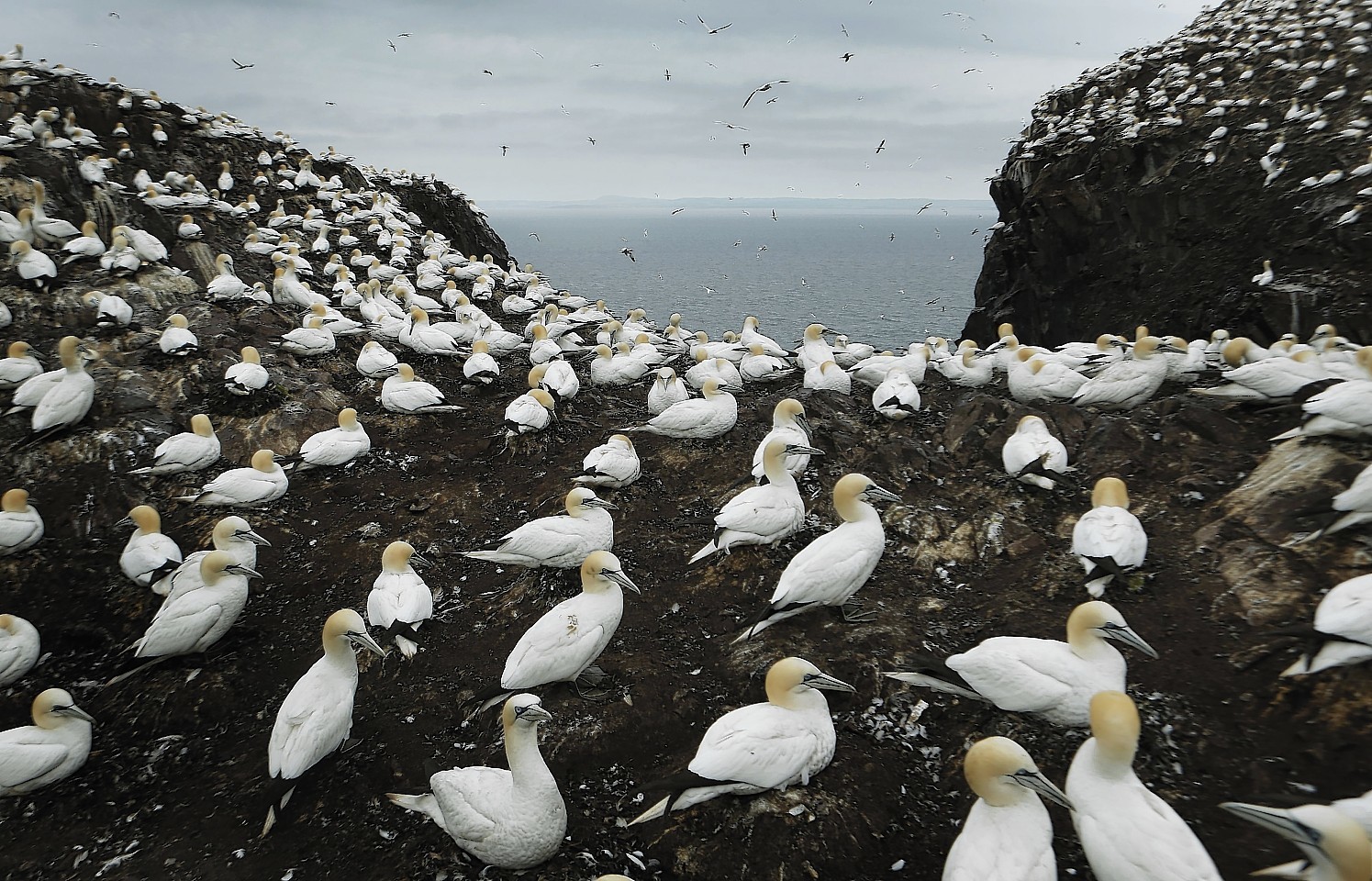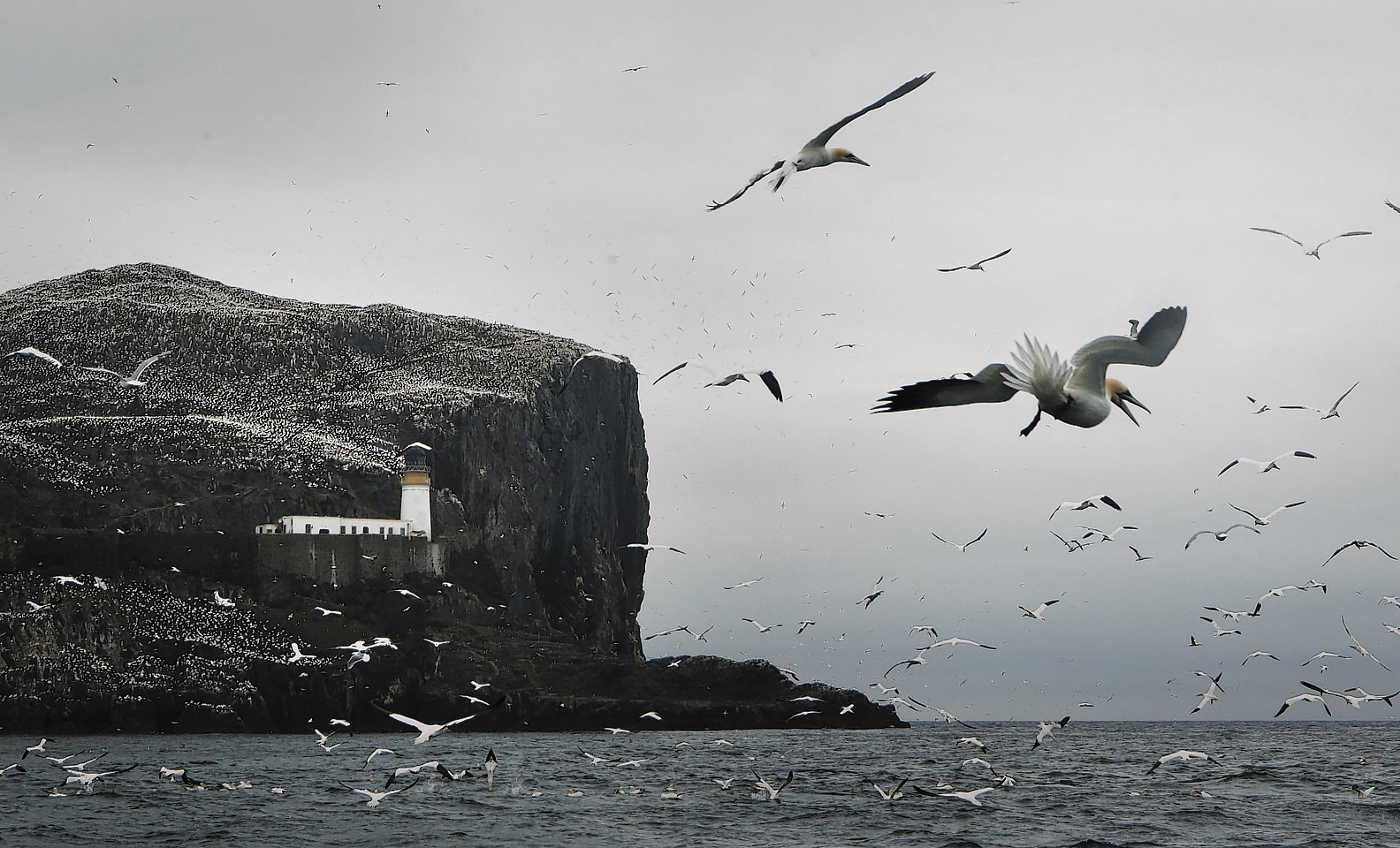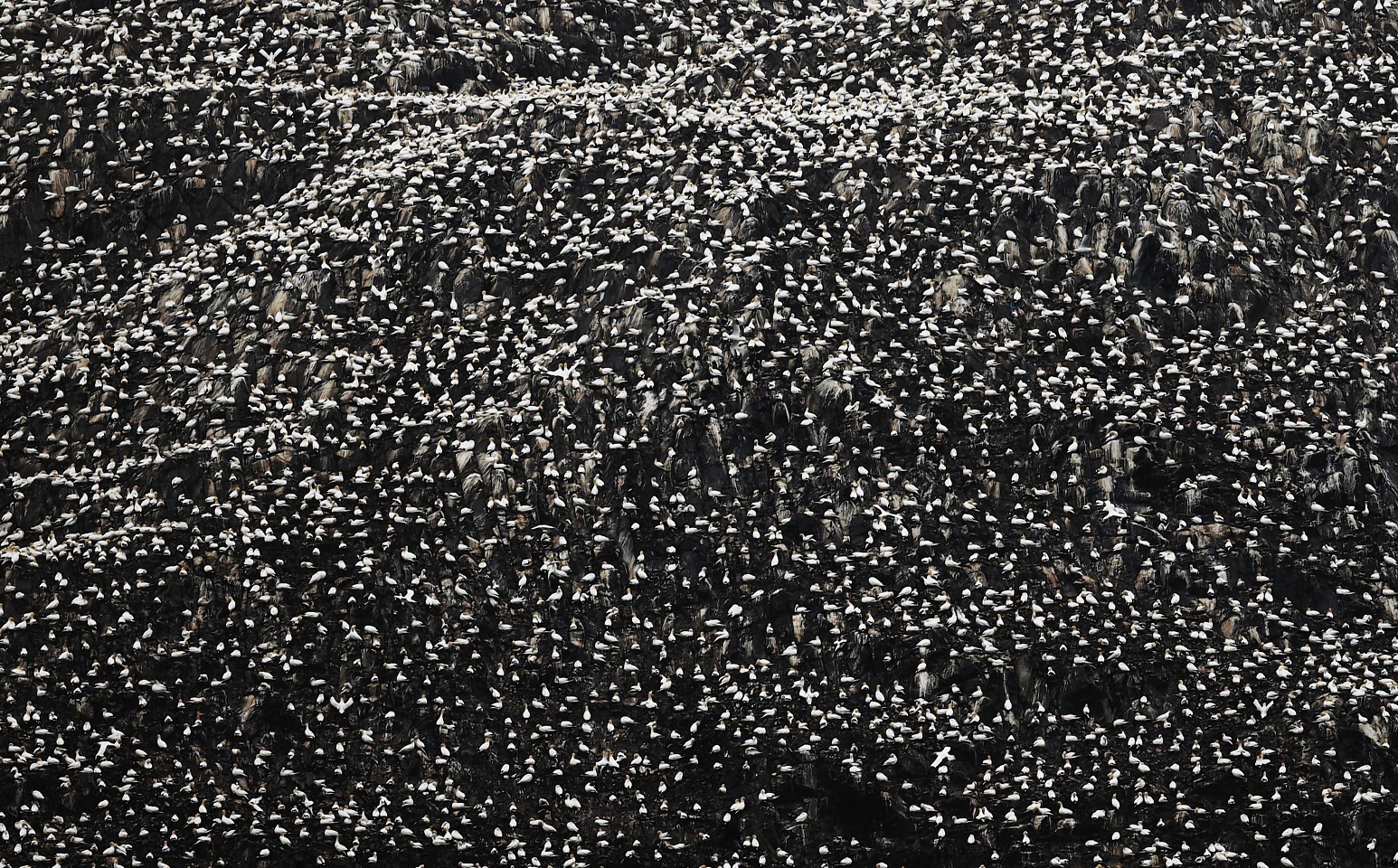A study of gannets off the northwest coast has found the birds’ numbers have increased rapidly over the last decade _including the area where baby gannets or guga are hunted.
The latest results confirm particularly northwest Scotland is an extremely important region for gannets, one of our most spectacular seabirds.
The SNH-commissioned survey found that gannets nesting at Sule Skerry where local people are licensed to hunt a controlled number of the young birds, increased at a rate of more than 47% per year.
On the Flannan Islands, the growth was 7.5% per year. Numbers changed very little on St Kilda, now the world’s second-largest gannet colony after Bass Rock, and Sule Stack.
Gannets are Scotland’s largest seabird, weighing between 2.5 to 3.5kg, with nearly a 6ft wingspan. They migrate to the west coast of Africa, and sometimes further, in the winter. They only lay one egg and pairs typically mate for several seasons, if not for life.
The good health of gannets across Scotland may be explained by their foraging behaviour. They can fly for great distances in search of food, and are able to take a wide range of prey species – features which may make them more resistant to changes in the marine environment compared with other birds. They also usually nest at sites which have few predators, have produced lots of chicks over the past decade, and have high survival rates.
Both Sule Skerry and the Flannan Islands have plenty of unused but suitable nesting habitat, and this may explain why the number of gannets in these particular colonies has increased. This contrasts to the stable numbers on Sule Stack, where gannets already occupy all the suitable breeding areas. This may lead to gannets establishing new colonies, as has already occurred at Sule Skerry, and may also be happening at Barra Head.
Eileen Stuart, SNH’s head of policy and advice, said: “Scotland has internationally important populations of seabirds, and gannets in particular, so it’s vital that we monitor how they’re faring. The survey is especially good news as gannets are, like many seabirds, of conservation concern.”
Gannets are commonly seen around the Scottish coast throughout the spring, summer and autumn. Breeding colonies such as Bass Rock in East Lothian and Troup Head in Aberdeenshire are great places to watch them.


